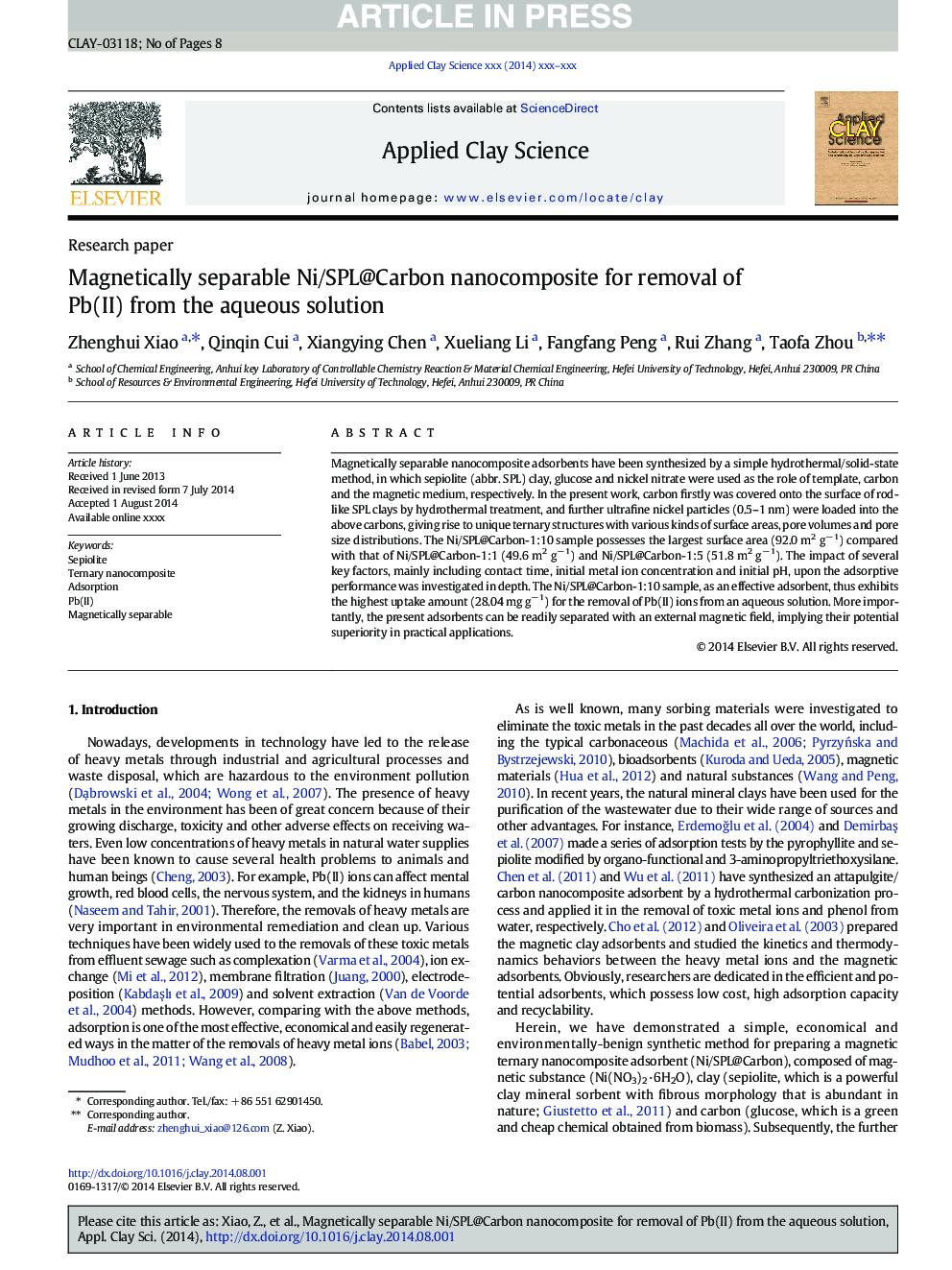| Article ID | Journal | Published Year | Pages | File Type |
|---|---|---|---|---|
| 8046824 | Applied Clay Science | 2014 | 8 Pages |
Abstract
Magnetically separable nanocomposite adsorbents have been synthesized by a simple hydrothermal/solid-state method, in which sepiolite (abbr. SPL) clay, glucose and nickel nitrate were used as the role of template, carbon and the magnetic medium, respectively. In the present work, carbon firstly was covered onto the surface of rod-like SPL clays by hydrothermal treatment, and further ultrafine nickel particles (0.5-1 nm) were loaded into the above carbons, giving rise to unique ternary structures with various kinds of surface areas, pore volumes and pore size distributions. The Ni/SPL@Carbon-1:10 sample possesses the largest surface area (92.0 m2 gâ 1) compared with that of Ni/SPL@Carbon-1:1 (49.6 m2 gâ 1) and Ni/SPL@Carbon-1:5 (51.8 m2 gâ 1). The impact of several key factors, mainly including contact time, initial metal ion concentration and initial pH, upon the adsorptive performance was investigated in depth. The Ni/SPL@Carbon-1:10 sample, as an effective adsorbent, thus exhibits the highest uptake amount (28.04 mg gâ 1) for the removal of Pb(II) ions from an aqueous solution. More importantly, the present adsorbents can be readily separated with an external magnetic field, implying their potential superiority in practical applications.
Related Topics
Physical Sciences and Engineering
Earth and Planetary Sciences
Geochemistry and Petrology
Authors
Zhenghui Xiao, Qinqin Cui, Xiangying Chen, Xueliang Li, Fangfang Peng, Rui Zhang, Taofa Zhou,
